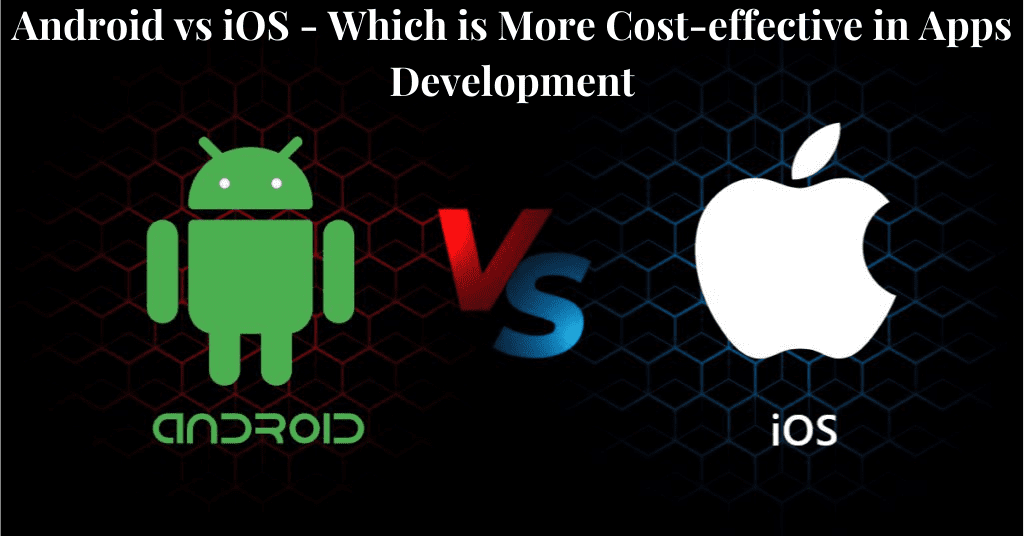Nowadays, the company program became an increasingly intrinsic part of every enterprise. Are you running a business and trying to develop a program for the enterprise? There are just two operating systems to opt out of; yet one might be the open-source contender, Android, and also the moment we possess the proprietary winner, iOS.

The contrast between them and picking the one up is becoming difficult with every passing day. However, 1 factor which can help people to draw a line of differentiation could be your budget. Android app development is a natural choice when it comes to development with small funding, but developing a program really isn’t the conclusion of the story. Creating a successful app needs proper marketing. An app is only worth it if it might generate revenue for the business and a program can generate revenue if it reaches a certain amount of individuals.
So, let’s find out that this OS is more suitable for a business with a small advertising budget.
1. Registration Fees –
Play Store vs. AppStore: Your program marketing jobs shall begin the minute you are done with the evolution. Another thing is to set up your program on the store for those users. For that, You’ll Have to enroll in the Play Store for Android or even the Apple App Store for iOS. The two stores charge differently and also have a massive big difference. Android charges $25 with life validity; on the flip side, iOS varies $99 for a one-time enrollment, so they charge the same annually.
Many validate the higher enrollment price by top average app price for Apple App Store; nevertheless, the statistics show something different. As Google saw a whopping 27 percent increase in app revenues this past year, the difference between your Android and also iOS app revenues is the best way to diminishing.
2. Target Audience –
A Significant Factor: Though iOS is a widely used OS in the united states, Android could be the worldwide leader in the cell industry. If you’re wanting to focus on a worldwide audience, then opting for Android makes more sense, however, US-based users are somewhat more active on iOS. A recent analysis centered on distinct demographics shows that the buyer base for iOS is smaller. But, it includes educated users with high income who spend more money and time on the app. On the conflicting, the majority of all Android users participate in noninvasive countries. iOS is popular for business purposes; many entrepreneurs and high-level executives choose iOS over Android.
Thus, while deciding on the app advertising budget, consider if you’ll have the ability to focus on your audience or perhaps not. If you’re looking to focus on a diverse demographic from across the planet, Android may be your ultimate choice. However, if you want to aim at high-income professionals within the US, you’ve got to go for iOS app development.
3. App-store Optimization (ASO) Cost –
For virtually any program marketing effort, App Store Optimization has become the center. As Android is a Google product, it’s the ultimate choice for marketers. For people with an understanding of Google search engine optimization, optimization to the program stores is not just a significant task. There are a number of important differences between both ASO and search engine optimization. It’s not hard to presume that Google provides taste to Android programs, but Google uses a wise algorithm that will rank apps applicable to the device’s OS.
Another element that one ought to listen to is the existence of several app stores for Android programs. In addition, you can find lots of cross-platform app stores available on the market. Nevertheless, that the Apple app store is Google’s competition, however, it doesn’t impact the ASO aspect of this standing of their iOS program. Nobody can deny the fact that the Apple app store’s inbuilt ASO capabilities are far ahead of the Play Store.
4. Cost-per Install (CPI) –
Similar to net’s PPC (Pay-per-click ), we have Cost-per Install or CPI for your app Shop. It is but one of the essential facets in terms of budgeting an app marketing effort. CPI eases you to pay for only when the user installs the app from the shop. Aside from the number of people who see the advertisement, you just must pay after the installation was created by the user.
When we compared the CPI price, then the App Store CPI rates are marginally higher than the Android CPI rates. But this varies from region to region, yet this may be the case in the majority of the area. Apart from CPI, other options which could be considered to increase revenue include CPE, CPM, along with CPS. For the above options, Android is more budget-friendly in contrast to iOS.
5. Push Notifications –
The behavior of consumers on promotion efforts varies from platform to platform. iPhone users are far more active and the engagement rate is higher, however, in the case of push notifications, Android users are more inclined to click onto it than iOS users. There are various reasons for this disparity. IOS notification pops after the user deletes the device; whereas, push notifications for Android stay on the telling pub or lock screen until clicked. This may be the main reason for the quick answer of Android users, which makes it a good alternative for investment.
Apple has been able to keep in control of the US economy nevertheless, Google is focusing on improving the ROI of app marketing within a small budget. There is no doubt that marketing for Android app is less expensive than iOS app marketing which makes it more straightforward. Choosing Android for the mobile program development is a sensible decision to reach a global audience with a limited investment and budget.










